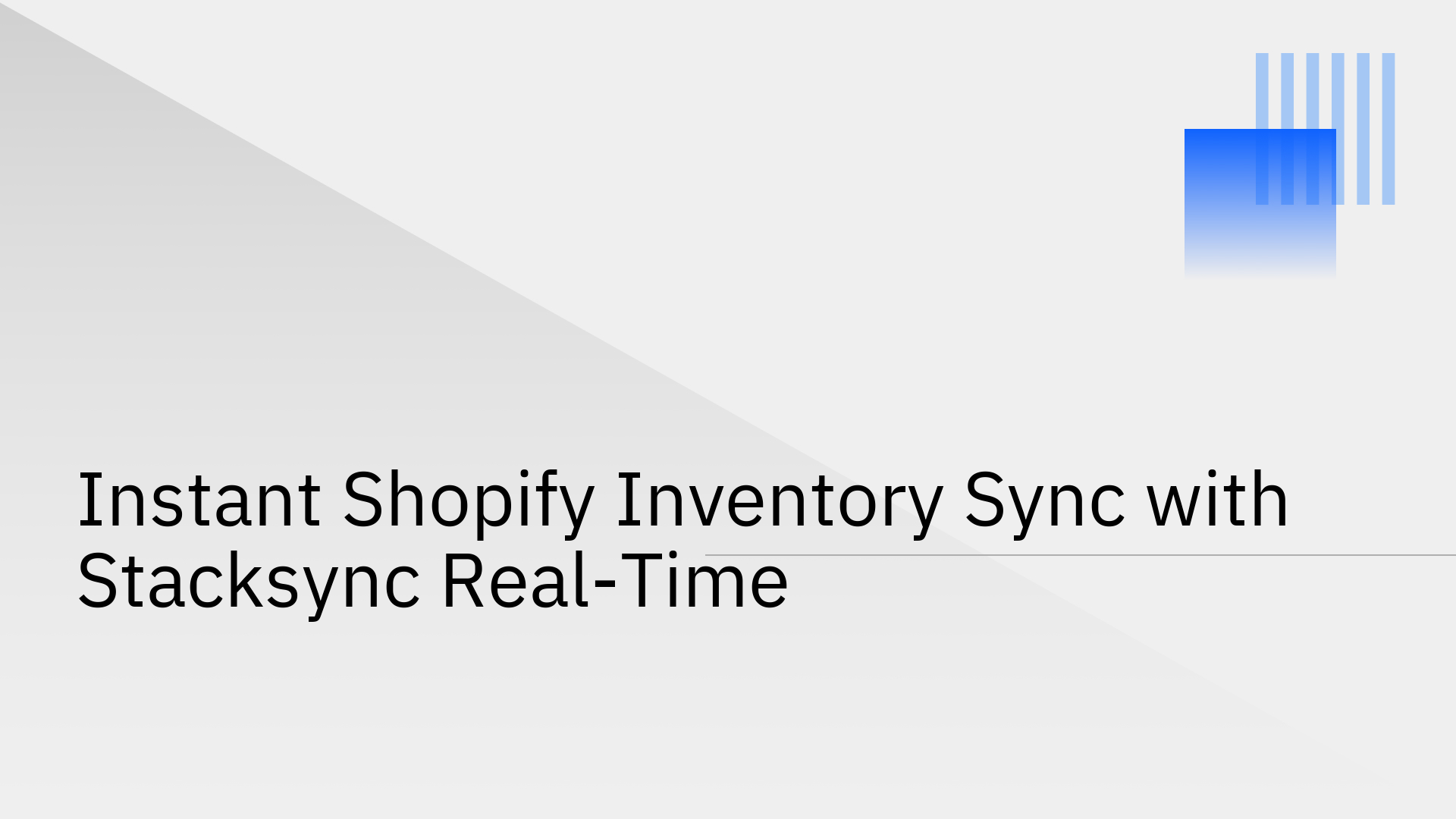
Shopify merchants expanding across multiple channels often confront significant inventory management challenges. As businesses scale beyond a single storefront to marketplaces, social commerce, and physical locations, maintaining data consistency becomes a critical, yet complex, operational hurdle.
Issues like data discrepancies, stockouts of popular items, and the pervasive risk of overselling are common [5]. These problems lead directly to a poor customer experience, damaged brand reputation, and lost revenue. For modern e-commerce businesses, a real-time, two-way shopify inventory data sync is no longer a luxury it is an essential component for achieving accuracy and operational efficiency.
Stacksync is an enterprise-grade data integration platform purpose-built to solve these precise issues by providing instant, reliable, and bidirectional data synchronization.
Inaccurate inventory data introduces significant financial and reputational risks. The consequences of data silos and delayed updates ripple across the entire business, from customer satisfaction to operational overhead.
Overselling—accepting an order for an out-of-stock item is one of the fastest ways to erode customer trust. It forces order cancellations and refunds, creating a frustrating experience that directly impacts brand perception. According to a recent survey, 68% of consumers would develop a more negative view of a retailer that oversold an item to them [8]. Beyond customer sentiment, overselling can also lead to penalties from marketplaces like Amazon or eBay, which enforce strict fulfillment metrics [7].
The inverse problem—a stockout of a popular item due to poor inventory visibility—translates directly into lost sales. When a customer lands on a product page only to find it unavailable, they are likely to seek alternatives from competitors. Without real-time tracking, businesses cannot accurately forecast demand or replenish stock proactively, leading to recurring missed revenue opportunities and a potential loss of market share [3].
Manual inventory updates are not only time-consuming but also highly susceptible to human error. Staff waste valuable hours attempting to reconcile stock levels between Shopify, warehouse management systems (WMS), ERPs, and other sales channels. This operational drag increases labor costs and introduces data inaccuracies that compound over time. Automating these processes is critical to reducing errors, ensuring data integrity, and freeing up teams to focus on growth-oriented activities.
Stacksync is architected to eliminate the technical challenges of maintaining accurate inventory data across complex e-commerce ecosystems. It provides a robust, scalable foundation for a true single source of truth.
Unlike traditional integration tools that operate on schedules or batches, Stacksync offers true real-time, bidirectional synchronization. When a sale occurs on Shopify, inventory levels are instantly updated in your ERP or WMS. Conversely, when stock is replenished in the warehouse, that change is reflected on your Shopify storefront in milliseconds. This sub-second latency is critical for accurately managing inventory during high-volume periods like flash sales or holiday promotions. By providing this level of performance, Stacksync empowers businesses with real-time inventory management.
Modern e-commerce operations rely on a diverse stack of specialized applications. Stacksync is built to connect Shopify with a wide array of mission-critical systems, including:
Our platform supports both standard and custom objects and fields, enabling a fully customized configuration that matches your unique data model. Whether you're managing complex product bundles, multi-location inventory, or custom fulfillment logic, Stacksync provides the flexibility to build a sync that aligns perfectly with your business processes. Explore how we cater specifically to e-commerce businesses.
Data consistency is paramount, which is why Stacksync includes advanced features to guarantee reliability and prevent data corruption.
These features provide the automated reliability necessary for maintaining enterprise data consistency across your entire technology stack.
With Stacksync, implementing a production-grade Shopify inventory sync is a straightforward process that takes minutes, not months.
Ready to eliminate inventory errors? Book a demo with a Stacksync engineer today.
Inaccurate inventory data directly harms sales, erodes customer trust, and creates operational drag. Manual processes and batch-based updates are no longer sufficient for the demands of modern, multichannel e-commerce. A real-time shopify inventory data sync solution is a non-negotiable requirement for any scaling brand.
Stacksync provides the definitive platform for achieving this single source of truth. With its millisecond speed, enterprise-grade reliability, and unmatched ease of use, Stacksync empowers merchants to focus on growing their business, confident that their data is always accurate and consistent across every system. See a real-world example of how to optimize orders and inventory with a Shopify-NetSuite sync.